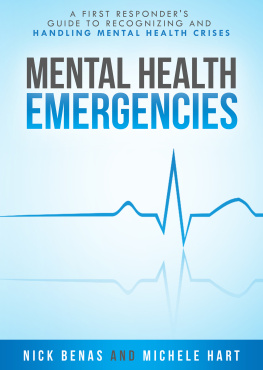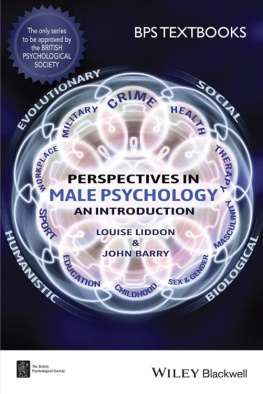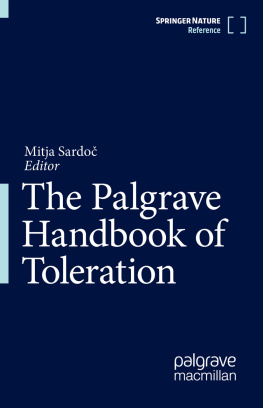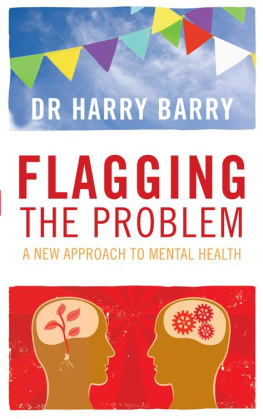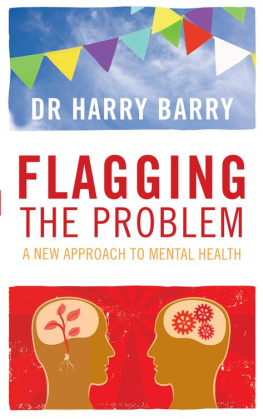John A. Barry - The Palgrave Handbook of Male Psychology and Mental Health
Here you can read online John A. Barry - The Palgrave Handbook of Male Psychology and Mental Health full text of the book (entire story) in english for free. Download pdf and epub, get meaning, cover and reviews about this ebook. year: 2019, publisher: Springer International Publishing, genre: Politics. Description of the work, (preface) as well as reviews are available. Best literature library LitArk.com created for fans of good reading and offers a wide selection of genres:
Romance novel
Science fiction
Adventure
Detective
Science
History
Home and family
Prose
Art
Politics
Computer
Non-fiction
Religion
Business
Children
Humor
Choose a favorite category and find really read worthwhile books. Enjoy immersion in the world of imagination, feel the emotions of the characters or learn something new for yourself, make an fascinating discovery.
- Book:The Palgrave Handbook of Male Psychology and Mental Health
- Author:
- Publisher:Springer International Publishing
- Genre:
- Year:2019
- Rating:4 / 5
- Favourites:Add to favourites
- Your mark:
- 80
- 1
- 2
- 3
- 4
- 5
The Palgrave Handbook of Male Psychology and Mental Health: summary, description and annotation
We offer to read an annotation, description, summary or preface (depends on what the author of the book "The Palgrave Handbook of Male Psychology and Mental Health" wrote himself). If you haven't found the necessary information about the book — write in the comments, we will try to find it.
The Palgrave Handbook of Male Psychology and Mental Health — read online for free the complete book (whole text) full work
Below is the text of the book, divided by pages. System saving the place of the last page read, allows you to conveniently read the book "The Palgrave Handbook of Male Psychology and Mental Health" online for free, without having to search again every time where you left off. Put a bookmark, and you can go to the page where you finished reading at any time.
Font size:
Interval:
Bookmark:


Cover illustration: Ryan McVay/gettyimages
This Palgrave Macmillan imprint is published by the registered company Springer Nature Switzerland AG
The registered company address is: Gewerbestrasse 11, 6330 Cham, Switzerland
This book is dedicated to the memory of Dr. Ross Chernin
John A. Barry, Martin Seager, Roger Kingerlee and Luke Sullivan have made a major contribution to psychology by curating and editing the comprehensive Palgrave Handbook of Male Psychology . Every chapter in this book adds critical knowledge about how to effectively understand and meet the needs of men. The editors asked me to write the foreword and discuss my thoughts about the evolution of working with men over the coming decades.
This book could not arrive at a better time for professionals, only a few months after the membership of the British Psychological Society (BPS) voted for a new Male Psychology Section that will allow the BPS to take a lead in promoting awareness, research and understanding of male gender psychology ( malepsychology.org.uk 2018). This represents a watershed moment for the field of male psychology and is worth a moment of appreciation and reflection.
Advances in male psychology are important in relation to many of the health needs faced by men. Despite some overall improvements in life expectancy for men in the United States and United Kingdom (Arias et al. 2017; Robertson and Baker 2016), globally male life expectancy lags five years behind women, and this gap is expected to increase over the next 15 years (Baker and Shand 2017). Of course, the mental health of boys, adolescent males, and adult men remains a particularly important issue of concern. Without a doubt there is more global attention towards the health of menthis can be seen through different public health campaigns across the globe. Suicide, depression and the full range of mental health issues represent significant concerns, and those in the helping professions want and need guidance on how to help. Males represent the majority of those who die by suicide worldwide (WHO 2011). In the United States, though women are diagnosed with depression at twice the rate of men, men are 3.5 times more likely to die by suicide (Centers for Disease Control and Prevention 2015). Oliffe et al. (2012) noted that the pathway between mens depression and suicide is not clearly understood, but the pathway to suicide prevention is connected to understanding how men experiencing depression formulate their plans and thoughts about suicide. Thus, professionals need to better understand men themselves through gaining direct access to them (e.g., through outreach, health promotion, services that attract men, etc.) and by understanding how to communicate better with men and tailor services to their needs. Many of the efforts in male psychology have focused on the latterhow does the field of psychology adapt and modify services so that we can effectively meet the needs of men? The Palgrave Handbook of Male Psychology represents a significant step towards broadening our gendered understanding of the male clients that we see, or hope to see, while offering various ways of making meaningful therapeutic contact with men. In addition, many chapters in this book highlight the changing field of male psychology. That shift can be seen in the emphasis on how professionals work with and alongside male clients in effectively delivering services that are inclusive to men and their experiences, rather than simply delivering gender-blind services to male clients.
When teaching about how to effectively counsel men, I often ask if anyone ever had a formal course or even lecture on the psychology of men. Unless someone was in gender studies as an undergraduate, the answer is almost always no. It would also be no for me as well as I never had a formal course or lecture either in my undergraduate studies or across three graduate programmes, though I was lucky to find mentors and advisors who helped me into the emerging field of the psychology of men and masculinity. Prior to this informal scholarly education, like most men, I learned about masculinity as a boy through observation, social pressure, and through direct action (often at the end of an insult or insinuation), or by observingor being the one directinga comment or putdown towards another. Masculinity was not talked about directly, but indirectly it governed much of my action and how I presented myself publicly.
My boyhood education was full of contrasts and contradictions. I revelled in sport and physicalitythese were places that felt free to me. Even though I was smaller than other boys, I was gifted with a competitive edge and grit that allowed me to play with larger, older boys. Yet other settings were not as carefree. Though my father was a psychologist in a small town, I grew up in a rural, more traditional place in the American Midwest, and for the most part my father and the families around us reflected those values. The values and the people around me were primarily blue-collar and white, and public deviations from male gender role norms were not welcomed. I learned that my public behaviour did not always match my private behaviour or my inner world. Yet at some level, I also knew that my experience was not weird or deviant, but rather a game that most of the boys around me had all agreed to play. I understood what not to do as a male in certain contexts. In fact, there were more rules about what NOT to do as compared to what to do. I also understood that these notions had a certain amount of plasticity to themeven though I knew that I should not cry in public, tears often formed in my eyes as I could not really control them.
Font size:
Interval:
Bookmark:
Similar books «The Palgrave Handbook of Male Psychology and Mental Health»
Look at similar books to The Palgrave Handbook of Male Psychology and Mental Health. We have selected literature similar in name and meaning in the hope of providing readers with more options to find new, interesting, not yet read works.
Discussion, reviews of the book The Palgrave Handbook of Male Psychology and Mental Health and just readers' own opinions. Leave your comments, write what you think about the work, its meaning or the main characters. Specify what exactly you liked and what you didn't like, and why you think so.





